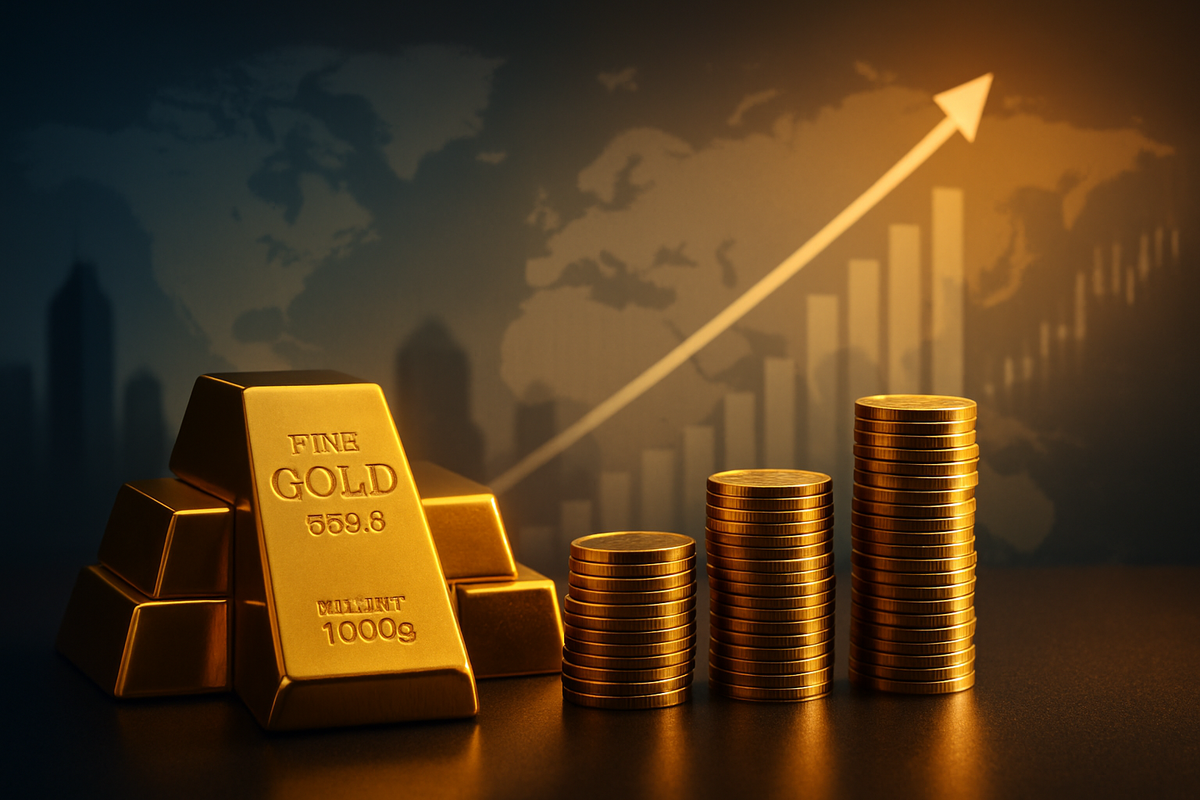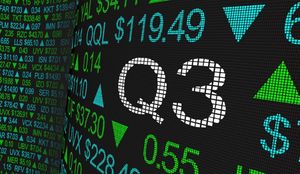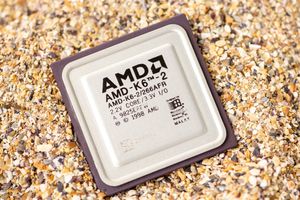
In a significant bullish declaration for the precious metals market, investment banking giant Goldman Sachs (NYSE: GS) has dramatically raised its gold price forecast, now predicting the yellow metal will hit an astounding $4,900 per ounce by December 2026. This upward revision, announced around October 6-7, 2025, comes as gold has already shattered historical ceilings, with spot prices recently topping the $4,000 per ounce threshold, signaling a robust and potentially sustained rally.
The revised outlook from one of Wall Street's most influential firms underscores a growing institutional conviction in gold's enduring appeal as a safe-haven asset and a hedge against economic uncertainties. This move is poised to fuel further investor interest in gold, potentially driving capital into gold-backed instruments and mining equities, while also reflecting broader concerns about inflation, geopolitical stability, and the future trajectory of global monetary policy.
Goldman Sachs' Bullish Bet: A Deep Dive into Gold's Ascent
Goldman Sachs' (NYSE: GS) decision to elevate its gold price target to $4,900 per ounce by December 2026 marks a substantial increase from its previous forecast of $4,300, representing a 14% jump in its medium-term outlook. This revised projection, publicly reported around October 6-7, 2025, was made amidst a "breakneck rally" that saw spot gold touch an intraday high of $3,977.19 per ounce, with gold futures even surpassing the $4,000 mark for the first time ever around the same period. This historic surge has pushed gold's year-to-date gains in 2025 to approximately 51%, highlighting the intense upward momentum.
The investment bank attributes its heightened confidence to a confluence of powerful and "sticky" drivers. Analysts, including Lina Thomas and Daan Struyven, point to persistent and robust inflows into Western gold-backed Exchange Traded Funds (ETFs) as a key factor, demonstrating sustained private investor interest. Even more impactful is the relentless buying spree by global central banks, particularly those in emerging markets, which are actively diversifying their reserves away from traditional assets. Goldman Sachs anticipates this central bank demand to remain significant, forecasting an average of 80 metric tons in 2025 and 70 tons in 2026.
Another critical pillar supporting Goldman's bullish stance is the anticipation of substantial interest rate cuts by the U.S. Federal Reserve. The firm projects a 100-basis-point reduction in the federal funds rate by mid-2026. Such a dovish shift in monetary policy would significantly lower real yields, thereby decreasing the opportunity cost of holding non-yielding assets like gold and enhancing its attractiveness to investors. Compounding these factors are ongoing geopolitical uncertainties and a weakening U.S. dollar, both of which traditionally bolster gold's safe-haven appeal.
The immediate market reaction to Goldman Sachs' updated forecast was less about a sudden jolt and more about an affirmation of an already deeply entrenched bullish sentiment. Gold prices were already hovering at or near record highs, driven by the very factors Goldman Sachs highlighted. While spot gold saw minor fluctuations on the day the news broke, the overarching narrative was one of solidified investor confidence in gold's ongoing upward trend. The bank itself noted that the risks to its upgraded forecast were "skewed to the upside," suggesting that if private sector diversification into gold exceeds current estimates, even higher prices could be realized.
Companies Poised to Win or Lose in Gold's Golden Era
The sustained bullish outlook for gold, particularly with Goldman Sachs' (NYSE: GS) ambitious $4,900 target, is set to create clear winners and losers across the financial landscape. Unsurprisingly, gold mining companies stand to be the primary beneficiaries, as higher gold prices directly translate into increased revenues and expanded profit margins, assuming stable production costs.
Major gold producers such as Barrick Gold (NYSE: GOLD) and Newmont (NYSE: NEM) are strategically positioned to capitalize on this rally. For these companies, a higher gold price improves the economics of existing mines, makes previously uneconomical reserves viable, and enhances the value of their exploration portfolios. This could lead to increased capital expenditure in exploration and development, potentially boosting future production. Investors might see improved earnings per share, higher dividends, and a general appreciation in stock value for these mining giants. Junior mining companies and exploration firms, while riskier, could also experience significant gains as their prospects become more attractive to larger players seeking to expand reserves or for direct investment.
Beyond the miners, companies involved in gold-backed financial products, such as Exchange Traded Funds (ETFs) like SPDR Gold Shares (NYSEARCA: GLD) and iShares Gold Trust (NYSEARCA: IAU), will likely see continued growth in assets under management. The fees generated from these funds will increase with higher gold prices and greater investor inflows, benefiting the fund providers. Precious metals refiners and dealers will also experience a surge in demand and activity. Conversely, companies whose business models are negatively impacted by inflationary pressures – which often accompany a rising gold price – or those that rely on a stable, strong dollar might face headwinds. However, the direct "losers" are less defined than the clear winners, as gold's rise often reflects broader economic shifts rather than directly undermining specific industries, unless they are heavily exposed to dollar strength or are highly sensitive to rising commodity input costs without the ability to pass them on.
The increased investor appetite for gold could also divert capital from other asset classes, particularly those perceived as riskier or offering lower real returns in an inflationary environment. While not direct "losers," equities in sectors sensitive to rising interest rates or those with less compelling growth stories might see some rotation of funds into safe-haven assets like gold. However, the overall impact remains largely positive for entities directly tied to the gold market, while the effects on other sectors are more nuanced and dependent on the underlying economic conditions driving gold's ascent.
Gold's Ascent: A Reflection of Broader Market Shifts
Gold's current rally, culminating in its breach of the $4,000 per ounce mark and Goldman Sachs' (NYSE: GS) revised $4,900 forecast, is not an isolated event but a potent symptom of profound shifts in the global financial landscape. This bullish momentum is deeply intertwined with broader industry trends, most notably persistent inflation, heightened geopolitical instability, and a fundamental re-evaluation of reserve assets by central banks worldwide.
Historically, gold has served as a reliable hedge against inflation, and the current environment of elevated price pressures in major economies has reignited this traditional role. Investors are increasingly seeking tangible assets to preserve purchasing power, making gold an attractive alternative to fiat currencies that are depreciating. Concurrently, a volatile geopolitical climate, marked by ongoing conflicts and rising international tensions, fuels demand for safe-haven assets. Gold, with its universal acceptance and lack of counterparty risk, becomes a preferred store of value during times of uncertainty, overriding concerns about its non-yielding nature.
The most significant ripple effect is evident in central bank behavior. For years, central banks, particularly those in emerging economies, have been consistent net buyers of gold, diversifying their reserves away from the U.S. dollar. This trend is accelerating, driven by a desire for greater financial autonomy and a hedge against potential sanctions or currency fluctuations. This sustained institutional buying provides a robust floor for gold prices and limits downside risk. Furthermore, a weakening U.S. dollar, anticipated by many analysts and a factor in Goldman Sachs' forecast, makes gold cheaper for holders of other currencies, thereby boosting international demand.
Comparing this rally to historical precedents, the current environment shares similarities with the gold booms of the 1970s, fueled by inflation and geopolitical shocks, and the post-2008 financial crisis rally, driven by quantitative easing and economic uncertainty. In both instances, gold demonstrated its resilience as a crisis hedge and an inflation protector. Regulatory or policy implications could emerge if central banks continue to aggressively accumulate gold, potentially influencing international monetary policy discussions and the role of the U.S. dollar as the dominant reserve currency. The sheer scale of current institutional and private sector interest suggests a fundamental re-rating of gold's value in a world grappling with persistent economic and geopolitical flux.
The Road Ahead: Navigating Gold's Elevated Trajectory
The future trajectory of gold, now firmly above $4,000 per ounce and with a $4,900 target from Goldman Sachs (NYSE: GS), presents a fascinating array of short-term and long-term possibilities, alongside both significant opportunities and challenges for investors. In the short term, gold prices will likely remain highly sensitive to incoming economic data, particularly inflation reports and statements from central banks regarding monetary policy. Any signs of persistent inflation or a more dovish stance from the U.S. Federal Reserve could provide further impetus for gold, pushing it closer to the $4,900 target sooner than anticipated. Conversely, stronger-than-expected economic growth or a more hawkish shift in central bank rhetoric could introduce volatility. Geopolitical developments will also continue to be a critical short-term driver; any escalation of global tensions could trigger immediate safe-haven flows into gold.
Looking further out, the long-term possibilities for gold appear anchored by the structural shifts identified by Goldman Sachs. Sustained central bank buying, coupled with ongoing retail and institutional demand for diversification, suggests that gold's elevated price level may become the new norm rather than a temporary spike. A scenario where global inflation remains sticky, or where sovereign debt levels continue to rise, could cement gold's role as a crucial portfolio component. This could lead to a sustained bull market, potentially even surpassing Goldman's ambitious target if economic and geopolitical uncertainties intensify beyond current expectations.
Market opportunities will primarily lie in gold-related investments, including physical gold, gold ETFs, and equities of well-managed gold mining companies (e.g., Barrick Gold (NYSE: GOLD), Newmont (NYSE: NEM)). Investors might also explore derivative products to gain leveraged exposure or hedge against market volatility. However, challenges will also emerge. The higher the price of gold climbs, the greater the potential for speculative bubbles and subsequent corrections. Investors will need to exercise caution, conducting thorough due diligence and managing risk effectively. Furthermore, a significant reversal in central bank policy, such as an unexpected period of aggressive rate hikes, could dampen gold's appeal. The emergence of a strong, stable alternative to the U.S. dollar, though currently unlikely, could also shift dynamics. Ultimately, the market will need to adapt to a world where gold plays an increasingly prominent role as both a monetary asset and a safe haven.
Gold's Enduring Luster: A Comprehensive Wrap-up
Gold's dramatic ascent past $4,000 an ounce, culminating in Goldman Sachs' (NYSE: GS) bold $4,900 price forecast by December 2026, marks a pivotal moment in the financial markets. The key takeaways from this event are clear: institutional confidence in gold is exceptionally high, driven by powerful and persistent forces. Central bank demand for gold as a reserve asset is a fundamental pillar of this rally, reflecting a global trend towards de-dollarization and diversification. Simultaneously, robust inflows into gold-backed ETFs signify strong private sector interest, while anticipated U.S. Federal Reserve rate cuts and ongoing geopolitical instability further enhance gold's allure as a non-yielding safe haven.
Moving forward, the market is likely to continue pricing in these factors, suggesting a sustained period of strength for the yellow metal. While some volatility is inherent in any commodity market, the underlying drivers identified by Goldman Sachs appear structural rather than transient. This shift indicates that gold is not merely experiencing a cyclical upturn but is potentially undergoing a fundamental re-rating of its value in a world characterized by economic uncertainty and geopolitical flux.
The lasting impact of this event will likely be a renewed focus on gold as an essential component of diversified investment portfolios, both for institutional and retail investors. Its role as an inflation hedge and a safe-haven asset will be continuously underscored, potentially leading to increased capital allocation in the precious metals sector. Investors should closely watch central bank policies, particularly those of the U.S. Federal Reserve, for cues on interest rate movements. Geopolitical developments, inflation data, and the performance of the U.S. dollar will also be crucial indicators to monitor in the coming months, as they will undoubtedly influence gold's journey towards or beyond the $4,900 target. This content is intended for informational purposes only and is not financial advice






